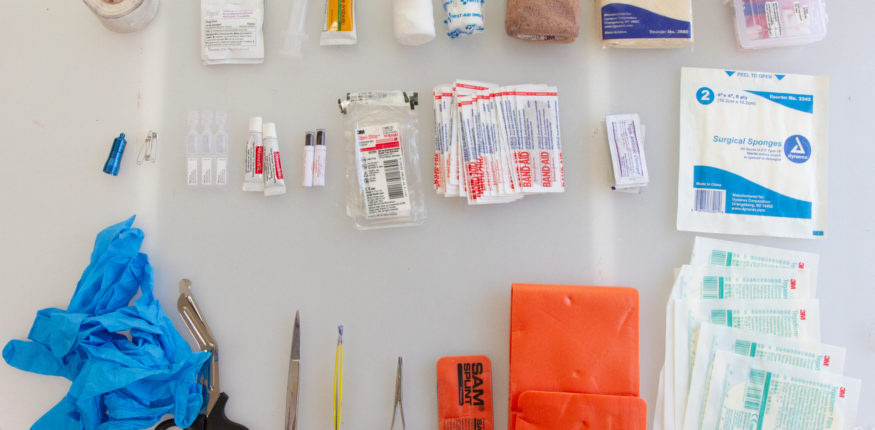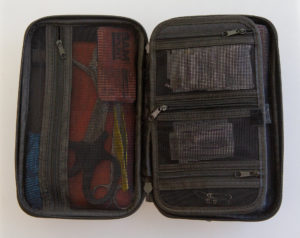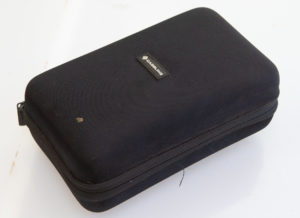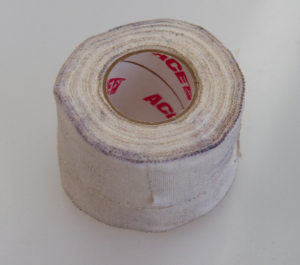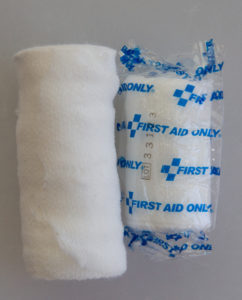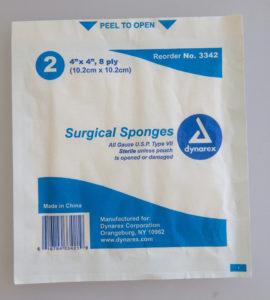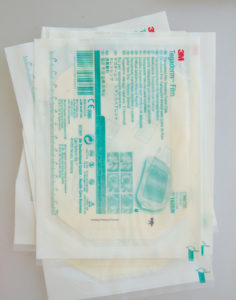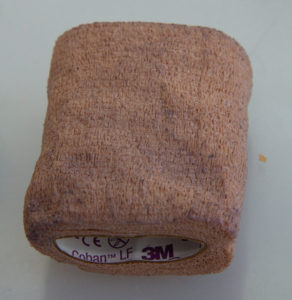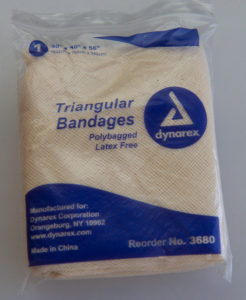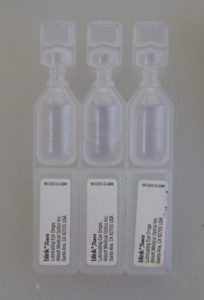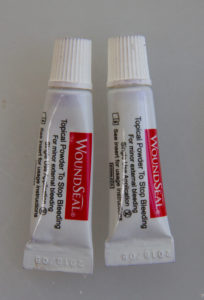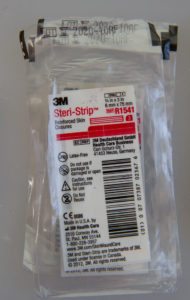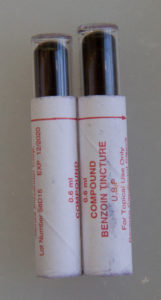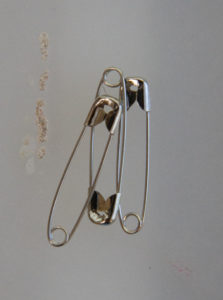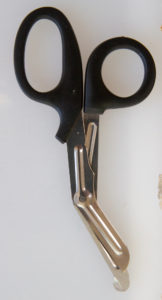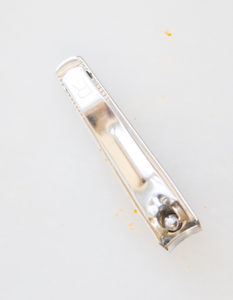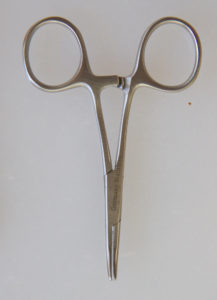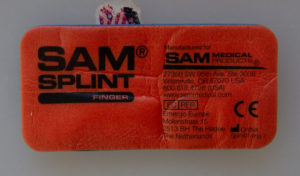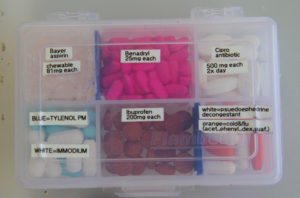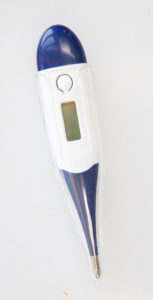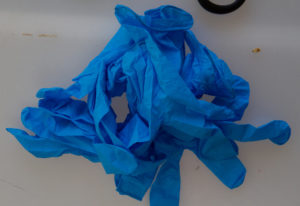This post is about building your own custom first aid kit, or else improving the one you have. With three boys, we use the first aid kit far more frequently than back in the day. Before kids, I was much more cavalier about injuring myself. As a parent, I want to be prepared for kid emergencies. I put together a custom kit for both Karen and myself, to be kept in the car (and from there into the backpack for adventures).
Before I go on, let me emphasize that I am not a doctor. I have friends who are doctors, and for them this post might be cringe-inducing. Though I am not a doctor, I have experienced a number of mid-level emergency situations over the years. Also, I used to lead outdoor adventure trips for teenagers—backpacking, climbing, kayaking, etc. The job required Wilderness First Responder (WFR) training. This was a three-day course that I ended up taking a couple of times over the years. If you have the time and money to take the WFR course, or even the shorter WFA (wilderness first aid) version, I highly recommend it. I would really like to find time for Karen and I to take it together but that notion is unrealistic (three straight days without kids and we choose to use that for an expensive and intense first aid course? HA!).
Primarily, taking a wilderness first aid course gives you confidence, and that confidence makes you feel safer and mentally stronger on every trip you take. To be honest, there is a limit to what you can do in the backcountry in a truly life-threatening emergency with no medical facilities, even if you had considerably more than three days of training. However, the knowledge of how to handle an emergency situation, how to stay calm and what steps to take, no matter how effective, is empowering.
WHY A CUSTOM FIRST-AID KIT IS BETTER THAN PRE-MADE
So, what to carry with you in a first aid kit? To start with, the pre-made kits that you can buy are terrible: they have a whole lot of bandaids and not much else. If they do have useful gear, it’s usually the cheapest and crappiest possible version. Pretty much the only good thing about those pre-made kits is the carrying case they come in.
It is far smarter to put together your own. The process of assembling the kit ensures that you are completely familiar with what you do (and don’t) have. It’s also a form of mental preparation and first-aid education: as you assemble your kit it is natural to brainstorm how and when you might use each of the items. Sure, it costs more up front. But if you’re going to do a thing, do it right. Many of the items come in bulk packages, so you end up with more than you need. There are advantages to having all those extras—it’s easy to make up a second (or even third) kit at the same time, and there are replacement spares when contents are consumed. I have a dedicated “preparation” bin in the garage that stores the extras for both the first-aid and survival kits. And trust me, when you put together a genuinely useful kit, things will get consumed and need to be replaced.
MY FIRST-AID KIT SUPPLY LIST
Below is my annotated first-aid kit list, and pictures. This list is partially derived from the wilderness first aid training, partially from the myriad situations I’ve been involved in over the years. However, this is not necessarily the best kit for you. There will certainly be at least a few things you don’t find necessary, and other items you wish to add. A first aid kit is a very personal thing. You should customize it, for the things you know how to use, and the hazards you imagine facing. In my descriptions of each item, you’ll get a sense of the accidents I worry about, and the limited level of training that I have. None of the items below came from a pre-made kit; they were all ordered individually, almost all off of amazon, usually in some small quantity so I still have some extras. All of the stuff fits inside the case, if only just.
This link will take you to an amazon wish-list with all of these items.
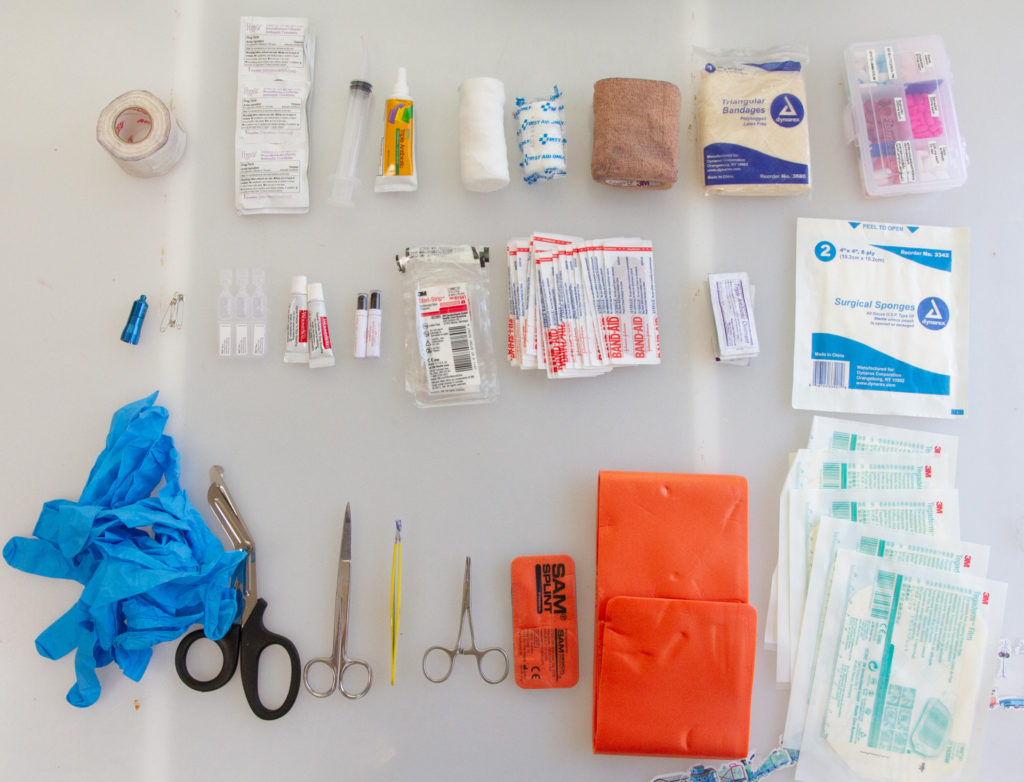
Carrying Case
This was the hardest thing for me to choose. I couldn’t find an empty red pouch with the first aid symbol that I liked, so I finally settled on a semi-hard sided zippered doo-jobby generic organizer. Aside from being black and non-descript, it’s perfect. It is exactly the right size. It is easily organized, with the middle divider and zippered pouches, so I can find and get to any item without unpacking the whole damn thing. And the slight rigidity to the sides prevents it from getting crushed in a backpack. I do wish that it was bright red and more self-evidently a first aid kit (so that people other than myself could easily identify and grab it if necessary). Perhaps I will go crazy with some red nail polish if I get motivated.
Cloth Tape
Absolutely necessary. Any sort of bandage or splint usually requires tape to rig it. There are two different styles: the “medical” slightly more plastic sort of feel, and the more “cloth” version that I have here. The cloth version has better adhesive, and I am used to it because it is ubiquitously used for wrapping fingers and making tape “gloves” for rock climbing. If I only took one item from the whole kit, it would be this roll of tape.
Gauze Rolls
For a wound that requires more than a bandaid, the gauze is what goes up against the skin. You can get it in little pre-wrapped pre-cut squares (next item in the list), or rolls like here. If you have a pair of scissors in your kit, it’s easy to cut the size that you need from the roll. Also, the roll can be wrapped all the way around an arm or a leg.
Gauze Pads
These are just squares of sterile gauze, different shape same thing as above, already in a good size for rapid access. If you come across a wound that’s bleeding a lot, you might tear open one of these and throw it on there right away with pressure.
Tegaderm bandages
This stuff is high-tech. They used it on me after my shoulder surgery. It is like a saran-wrap film for your skin. Super thin, clear, waterproof, and stays on for a long time (the square covering my whole shoulder stayed on for a week, even with numerous showers, until I peeled it off). It is slightly breathable, but not nearly like a bandaid or gauze. It’s more for wound healing, you wouldn’t put this on when it was still actively bleeding. It would go on after everything is cleaned out completely and all stitched up (or steri-stripped). Wouldn’t want to seal in dirt and bacteria under it. One nice thing about it for the first-aid kit is that each one, in it’s packaging, is about as thin as a piece of paper, so it takes up almost zero space.
Stretchy Wrap
This is for sprained ankles, or broken bones, or holding dressings in place. This stuff is sort of stretchy and sticky, so it sticks to itself and your skin. I think it has all the advantages of a traditional elastic wrap, but it’s even better for doing a good compression wrap for a sprain, etc. The only disadvantage compared to a traditional elastic wrap is that it isn’t infinitely reusable–with the old-style wrap you could throw it in the clothes washer to clean it and it would be good as new. This stuff you’re going to use when you need it, then throw it away and put on a fresh one.
Triangular Bandage
This guy is a classic. It’s designed to be used as a sling for an arm, though of course it can be used for many other purposes, e.g. a tourniquet or a wound dressing. I keep the baggie with it as the backside has pictures showing how to rig up the arm sling when the time comes, and I fear that I will forget in the heat of the moment.
Bandaids
If the injury is minor enough to use bandaids, it’s minor enough not to need anything at all. That’s always been my philosophy. However, kids have challenged my stance. They occasionally require the emotional comfort that a bandaid provides, even if it is useless. It makes them feel as if something can be done about the situation, even when the situation merely requires the healing power of … time.
Antiseptic Towelettes
Gotta get that cut cleaned before bandaging over it.
Syringe with plastic tip
This is all about irrigation. I’ve never used it for anything else. When you get cut or scraped up outside, the resulting wound is often filled with dirt and pebbles and sticks etc. You can’t be bandaging that sort of thing closed with stuff inside it, you really have to clean it out, and clean it well. I understand how hard it is—the last thing you want to do, or your patient wants you to do, is spend a half hour digging around inside their nasty wound to get out every last speck of detritus. If it’s deep, it can be queasy-inducing to do it for half a minute, let alone a half-hour—which might be what it takes. I have used this syringe before, filled up over and over again with plain water out of my nalgene, to clean out wounds. Be forewarned: it is painful for the person. That water comes out with force, and it hurts. You can cut the tip back a bit, with your trauma shears, so that it’s not quite so laser-like, but the powerful stream is sort of the point. Also, the boys love to play with these in the bathtub or backyard, just cut the tip back nearly to the body so they can’t stab each other with them.

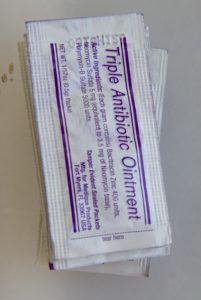
Neosporin
…or any antibiotic ointment. I first bought a box of individual-use packets, and I still have a few of these remaining in the kit, but I found that a) it’s a pain to rip open and apply b) they start to leak, either after time or getting crushed. Now I just carry a full (small) tube of it, which is way easier to deal with, and worth the space.
Eye drops
The most common affliction when we’re outside is something in the eye. That was true for myself, even before having kids. Now it happens to the kids all the time too. These eye drops come in nicely metered little plastic applicators, and I keep three of them in the kit.
Coagulating powder
One of my paranoid nightmares is a wound that just won’t stop bleeding, far from help, and this gives me another tool in the kit. This powder falls somewhere between “applying pressure” and putting on a tourniquet. Jamming this powder down into a deep wound to get it to stop bleeding wouldn’t be easy, but it’s better than the alternative.
Steri-strips
These are essentially an alternative to stitches. You pull the wound together and stick them across it, to hold it together. These things can be really good—as in, you might not need to bother with the stitches if you do a good job with these. Before you do it, obviously first clean the hell out of it (closing it up with stuff in there is worse than leaving it open), but also use the next product in the list to act like a skin glue so the steri-strips stay on well.
Tincture of Benzoin
This is a sort of skin adhesive to be used before installing the steri-strips above. You can also use it to help tape stick to the skin better.
Safety Pins
Useful for various things, splinter removal among them. Take up zero space.
Trauma Shears
If someone is unconscious you can’t take their clothes off, you cut them off. To be honest I’ve never used these, but I can see how if you need them, there’s no good (fast) alternative, so I carry them.
Regular scissors
Trauma shears are all well and good at cutting through a penny and clothes, but they suck at the basic stuff, like cutting a piece of cloth tape off the roll, or cutting a piece of gauze down to size.
AWESOME tweezers
I use the tweezer for splinters in the boys all the time. At least once a month. Cacti and wood: two splinter sources we have plenty of in New Mexico. I’ve used tweezers so much in the past seven years that I’ve become a tweezer connoisseur. They need to be super sharp to make me happy. Those generic angled eyebrow tweezers drive me crazy, they just don’t get the job done. The tweezers I’ve linked to are real sharp. They can cause injury themselves, so keep the little rubber tube to protect yourself from the tips. Aside from splinters, tweezers are also good for picking junk out of wounds, the bits that refuse to be irrigated out.
Nail clippers
One of the boy’s favorite sleep-avoidance tactics is to whip out a frayed semi-torn fingernail at bedtime and bemoan how they absolutely can’t fall asleep with such a crippling injury (despite not noticing it all day long). The nail clippers are also helpful for splinter removal, and most often simply for performing their stated job when I forget to take care of it before leaving on the camping trip. Also, nail clippers seem to vanish around our house; since the boys arrived on the scene they have become a consumable product in our house. If I can’t find them anywhere else, I can raid the first aid kit…
Hemostats
These are a sort of clamp; there are teeth that hold them closed. I believe the most dramatic use of these is for clipping a blood vessel closed to control bleeding. I don’t expect to ever use them for that, but I think it might be useful to have a set of grabbing tools other than the sharp tweezers.
Sam Splint-standard size
The sam splint is one of the best things to carry out to the woods. It is a padded, formable piece of aluminum, that you bend into a splint in whatever shape you need. It lasts forever—it is almostly infinitely bendable, don’t worry about practicing with it ahead of time, you can just bend it back into a flat shape for carrying. It is slightly bulky however; aside from the pill container, this is the largest item in the kit. It is thus tempting to leave it behind when you head out into the woods; resists that temptation, as it is one of the most useful items to take.
Sam Split-finger size
This is a tiny little version of the above, made specifically for splinting a finger. Now, truth be told you don’t need this if you have the full-size one above, and the trauma shears. You can use the trauma shears to cut whatever size you want out of the larger version. In which case you would probably want to tape the exposed metal edges. I went ahead and got this small version also, as I assume that it will see action (perhaps repeated) over the next decade of dealing with three boys. It’s very small, the picture doesn’t provide a good sense of scale.
Medicines
This is one of the most-used items on the list, and never comes with a pre-packaged kit. I used to carry my pills in little ziplocks, but the pills got crushed, and it was impossible to label anything reliably. I bought a little plastic organizer, then used my label maker with the 6mm tape. Here are the drugs I currently carry:
Ibuprofen (aka advil, 200mg/pill)
I got surgery on my right shoulder a year ago, and now I need to schedule the same surgery for the left shoulder. Ibuprofen helps me to sleep on the camp pad at night.
Bayer chewable aspirin (85mg/pill)
This is for heart-attacks. It’s the non-coated kind, for fastest absorption when chewing it in the mouth. Aspirin is a blood thinner; if someone is having a heart attack, it can help (chew three).
Benadryl (aka diphenhydramine, 25mg/pill)
This is an antihistamine for use for mild allergic reactions. If someone starts showing signs of an allergic reaction, you go to this first. If it might turn into a serious life-threatening reaction and you have no epinephrine (see last paragraph of the post) it is even more important to get it into them quick, while they can still swallow. This is also a sleep-aid; some of the common of-the-shelf sleep aids are nothing more than 50mg of bendaryl.
Cipro (aka antibiotic)
No, you’re not supposed to take antibiotic unless you actually have an infection, and you should take an antibiotic specific to the infection, and one can be allergic to antibiotics. All that said, if I was on an extended trip in the backcountry and knew for sure that I had some sort of infection, personally I would start taking the cipro (which was leftover from some precious ailment) and take my chances. That’s me, and I’m not a doctor. But I carry it anyway. I have never had to use it.
Immodium
Diarrhea can be (and is, in undeveloped parts of the world) a life-threatening emergency when it prevents a person from staying hydrated. If it lasts for an extended period of time it can dehydrate faster than your body can absorb.
Phenylephrine
Decongestant. Seems like I only discover that I’m sick once we’re on an adventure.
Daytime Cold & Flu
As above, but with an expectorant and cough suppressant.
Thermometer
Unfortunately, I have spent numerous nights out camping with the boys where either they, or I, or both, were puking or shitting sick in a bad way. Once I was solo dad’ing with Jasper and Bodie and I spent all night puking every fifteen minutes. Once, solo dad’ing again, Jasper spent all night with diarrhea, pooping every fifteen minutes in a makeshift latrine I dug in the vestibule of the tent. I find that having a thermometer to provide some feedback whether we’re dealing with a fever or not, and how bad it is, helps with decision-making, even if it is not immediately helpful. Also, it can help identify various forms of infection that might otherwise go unnoticed until much later.
Rubber Gloves
I didn’t carry any of these for a long time. My reasoning was that, if there was a stranger with a serious injury, I’m not the type of person to worry about blood contamination on my hands before I wade it to start helping. The gloves would be likely to stay in the kit even if I had them. Recently though I bought a box to use for unrelated cleaning etc, and decided I might as well put a couple of pairs in there. On camping trips, there often isn’t a great way to clean your hands. So using the gloves is a good way to protect the injured person from my dirty hands too.
Tiny flashlight
This is more of a survival kit item, which I also carry but that’s a whole separate post. Whenever I deal with wounds these days (especially splinters), I find myself reaching for the headlamp so I can see what I’m doing. This isn’t as good as a headlamp, but it’s so tiny you can easily hold it in your mouth.
There is one item that is missing from my kit, that I once had, and would like to re-add: epinephrine. Minor allergic reactions, hives, etc, are not life threatening and can be treated with benadryl. However, a major allergic reaction (anaphylaxis) can cause the throat to swell closed, killing the person. Benadryl does not work quickly enough, and is not strong enough, to counteract a throat-swelling anaphylactic reaction. For that, you need epinephrine, which is injected into a meaty muscle, and works almost instantly. It is synthetic adrenaline, and does not give you a pleasant feeling. It gives you that fight-or-flight, super anxious intense feeling, that, when experienced in the real world—say as the result of nearly getting into a car accident—usually only lasts a couple of harrowing terrifying seconds. But with the epinephrine injection it lasts an interminable 15-30 minutes. Almost everybody who carries epinephrine has it in the form of an Epi-Pen. The Epi-Pen makes the administration of epinephrine as safe and easy as possible. It’s a cylinder with a spring-loaded needle inside, and a spring loaded syringe. You push it against the side of your (or someone else’s) thigh, and it snicks out the needle and takes a few seconds to inject the epinephrine. You can get a prescription for one from your doctor, if you just ask for it (tell them that you’re going into the woods with kids, and are taking responsibility for the first aid). No one takes it to get high, so it’s not like the doctor is worried about you misusing it. I think it costs ~$50 these days. However, in the WFR course we were trained how to use just a little needle and a vial of epinephrine. There are numerous advanatages to this. To start with, the Epi pen is one-size all, for kids and adults, and so it gives only a kid-sized dose when an adult could/should have three times that amount. Second, the Epi-Pen only has one dose. It last 15-30 minutes. After it wears off, if the allergen is still present, the body can start swelling up again. I.e. you may not be out-of-the-woods, figuratively speaking, with only one dose. Third, the Epi-Pen is considerably more expensive than a vial and a few small needles. The needles are tiny, same size as diabetics use. And you don’t need to find a vein, or worry about air bubbles–it goes into a fat muscle, well away from veins and arteries. It really is quite simple and easy, but I understand why the Epi-Pen is even safer and easier. One more comment: ephinephrine has a shelf-life of only a few years, so it needs to be regularly replaced (I think it’s a big fat complicated molecule that likes to fall apart). If it’s cloudy or has black specks, you don’t use it.
My kids do not currently show signs of any allergies. That said, allergies can develop as they age. Moreover, trips usually involve kids from other families, or even strangers. It is unlikely that epinephrine will ever be needed. As the saying goes, though, it is better to have it and not need it, than to need it and not have it. The list of life-threatening emergencies that can be dealt with in the woods is really really short, but anaphylaxis is one of them. It can kill, and the epinephrine is life-saving. That’s a powerful reason to carry it, even if the probability is quite low.
If money and space were no object, there are two more items that I would carry with me in my car: 1) an AED (~$1200). The odds of encountering someone having heart-attack induced cardiac arrest, sometime in your life, are pretty good. It might even be yourself. An AED in those situations can save a life (CPR, on the other hand, is next to useless). 2) a fire-extinguisher. In the region we live, it is not out of the question to come upon a fire, either someone’s vehicle or in the brush along the side of the road, and in some small subset of those cases a fire extinguisher can actually put it out.
